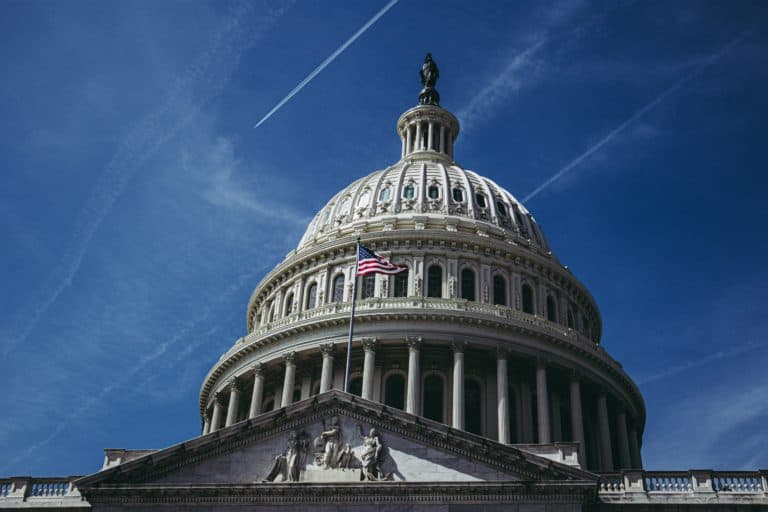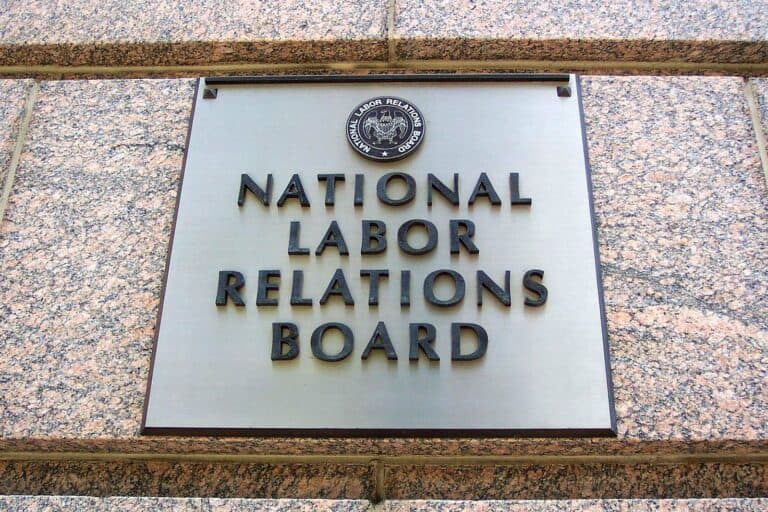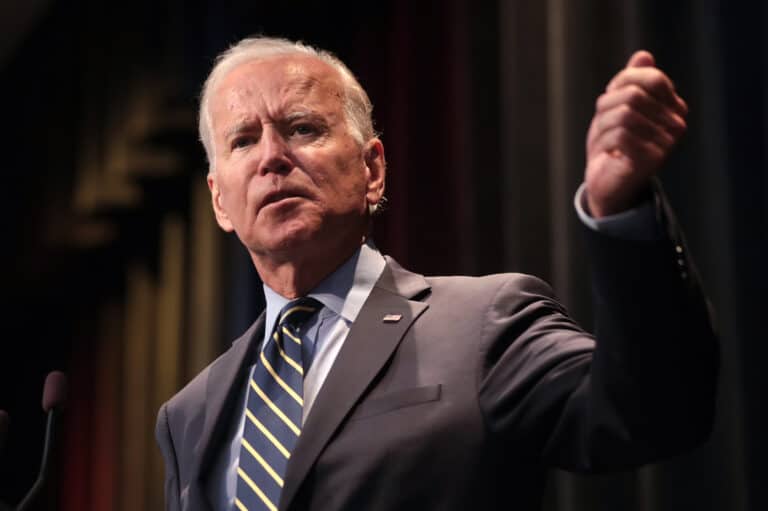
Ash Tomaszewski is a student at Harvard Law School and a member of the Labor and Employment Lab.
The Protecting the Right to Organize (PRO) act was reintroduced and passed in the House last month for the second time after being introduced last year and stalling in the Republican Senate. Endorsed by nearly 140 major unions including the UAW, AFL-CIO, SEIU, Teamsters, and others, the act is described by the AFL-CIO as “the most significant worker empowerment legislation since the Great Depression.” The Teamsters, too, referred to the act as “the most comprehensive pro-labor legislation in decades…”
The bill, amending the National Labor Relations Act, would seek to end right to work laws, provide a private right of action for unfair labor practices, make stronger remedies available to the NLRB, even the playing field for union organizing campaigns, and change the definition of employee and joint employer in order to better protect workers.
Sylvia Allegretto, an economist at the Institute for Research on Labor and Employment at the University of California, Berkeley, summarized the context for the bill. “We have vast inequality in this country and we can’t begin to unwind it because we’re in this corporate-led capitalist system where workers can’t get a fair shake,” Allegretto said. “We need the PRO Act. It’s an important step that we need to take in this country.”
Filibuster as a Labor Reform Killer
Despite overwhelming labor support and a Democrat majority, however, the Act is extremely unlikely to gain the 60 votes needed to overcome the filibuster – fueled by the pro-business lobby – that tends to target labor reform in the Senate. As a result, like many other fights for progressive policy change, this fight for labor reform is likely to become embroiled in the fight to eliminate the filibuster. Indeed, if the PRO Act fails due to the filibuster, it would become the sixth major labor reform proposal with majority support in the past sixty years to do so. The 1965 Fight to Repeal 14(b), the 1975 common-situs picketing bill, the 1977 Labor Law Reform Act, the striker permanent replacement ban bill of the 90’s, and the TEAM Act of the mid-90s all fell victim to the filibuster despite having majority support in Congress. In fact, as a result, there has been no major labor reform since the 1930’s in the New Deal. Catherine Fisk, a labor law professor at the University of California, Berkeley School of Law, stated that “The PRO Act is not going to be enacted unless the filibuster is eliminated because labor legislation is absolutely red meat for business groups…”
Getting Labor Behind Eliminating the Filibuster
While the PRO Act has an immense amount of support from the left, through major unions and leftist organizations like the DSA, unions have recently connected labor’s future to the elimination of the filibuster. In early March, the AFL-CIO formally demanded the elimination of the senate procedure, calling it, “[a]n artifact of Jim Crow. A creature of white supremacy. A procedure that was said to encourage robust debate but has turned into an instrument of government paralysis.” Highlighting the way in which the filibuster has served as an anti-worker tool more broadly, the AFL-CIO statement emphasized how it has blocked “labor law reform, equal pay for women, the DREAM Act, eliminating tax giveaways for companies that ship jobs overseas, an expansion of Social Security and countless other measures that would have helped our country…” The recommendation to eliminate the filibuster was unanimously approved last week by the AFL-CIO executive council, composed of more than 50 representatives of the nation’s largest unions.
Path to Removing the Filibuster
Eliminating the Filibuster—Rule 22—through a traditional Senate vote is not a viable approach for this Democratic Senate, as changing the Senate’s standing rules requires a two-thirds majority. What Senate Democrats can do, however, is attempt to overturn the rule through the so-called ‘nuclear option’. This option requires a senator to raise a point of order that a Senate rule is being violated. Then, the presiding officer would rule against or favor of that claim. The Senate as a whole can then vote to reverse the decision of the chair and with only a simple majority can overrule the chair, establishing a new precedent on the interpretation of the existing rule. This procedure was used in 2013 and 2017 to reduce the number of votes needed to push through nominations. In both cases, the majority leader used two non-debatable motions to introduce the nominations and raised the point of order that the vote would be by majority. The presiding officer’s objection was overturned on appeal via majority and the nominations succeeded.
Though Senate Progressives have already begun calling for the end to the filibuster, several senators like Manchin, Sinema, and Tester have all voiced their opposition to eliminating the rule. Manchin spoke particularly strongly, calling it “bullshit” and that stating that he opposed eliminating the rule in 2013 and that he “would be opposed to it again.” Prof. Fisk thus described talk of eliminating the filibuster as “a prelude to the fierce lobbying of Joe Manchin and other swing Democratic voters that would occur.” Senator Manchin did however recently suggest that he would be willing to reform the filibuster so that it would be harder to use, and abuse. “Make them stand there and talk – I’m willing to look at any way we can” said Manchin. Returning to a talking filibuster is just one way that the filibuster could be weakened without being completely eliminated. Currently, senators do not need to hold the floor in order to stop a bill and only need withhold unanimous consent. If this rule was reformed as Manchin, and Sen. Merkley in 2012, suggest, once a filibustering senator(s) left the floor, the “presiding officer of the senate would rule the period of extended debate is over. The Majority Leader would then schedule a simple majority cloture vote on the bill.” Assuming Democrats have wrangled 51 votes for the PRO Act, the bill would become law.
But the history of labor reform failures in the senate show that tepid opposition to the filibuster is no longer an option. To secure necessary change for the working class, a campaign promise from this administration, the Senate, and Labor, must prioritize the passage of the PRO Act, and therefore the reversal of the rule that has killed the last five major labor reform legislative proposals. The history is clear. If there is to be meaningful change for labor, unions and the left as a whole must organize behind eliminating the filibuster through whatever procedural mechanism will work.










Daily News & Commentary
Start your day with our roundup of the latest labor developments. See all
July 15
The Department of Labor announces new guidance around Occupational Safety and Health Administration penalty and debt collection procedures; a Cornell University graduate student challenges graduate student employee-status under the National Labor Relations Act; the Supreme Court clears the way for the Trump administration to move forward with a significant staff reduction at the Department of Education.
July 14
More circuits weigh in on two-step certification; Uber challengers Seattle deactivation ordinance.
July 13
APWU and USPS ratify a new contract, ICE barred from racial profiling in Los Angeles, and the fight continues over the dismantling of NIOSH
July 11
Regional director orders election without Board quorum; 9th Circuit pauses injunction on Executive Order; Driverless car legislation in Massachusetts
July 10
Wisconsin Supreme Court holds UW Health nurses are not covered by Wisconsin’s Labor Peace Act; a district judge denies the request to stay an injunction pending appeal; the NFLPA appeals an arbitration decision.
July 9
the Supreme Court allows Trump to proceed with mass firings; Secretary of Agriculture suggests Medicaid recipients replace deported migrant farmworkers; DHS ends TPS for Nicaragua and Honduras